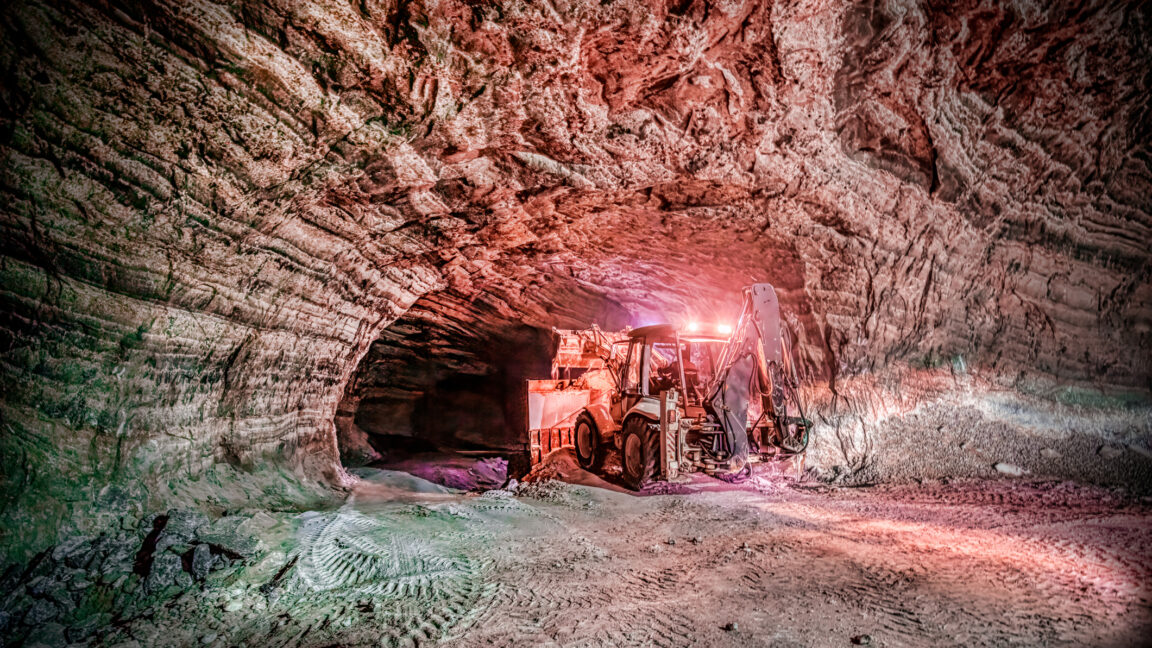Different species thrive beneath the oceans than under the land.
From the flamboyant blossoms and birds of rainforests to the living rainbows of coral reefs, Earth’s surface is teeming with life. But some of its most diverse and fascinating biomes are thriving in the darkness below.
We used to think that the subsurface was a far-from-ideal place for living things. Habitats that can soak up light and warmth from the Sun have the energy to sustain many forms of life and so were viewed as the most diverse. That view is now changing.
Led by Emil Ruff of the Marine Biological Laboratory (MBL), Woods Hole, Mass., new research has unearthed communities of underground microbes that are almost as—and sometimes more—diverse than even reefs and rainforests. Ruff and his team found that subsurface bacteria and archaea are flourishing, even at depths where the energy supply is orders of magnitude lower than enjoyed by organisms in habitats that see the sun.
“Subsurface ecosystems may host more than half of all microbial cells,” the researchers said in a study recently published in Science Advances.
Digging deeper
Microbes have adapted to survive just about everywhere. Starting in 2016, Ruff began collecting samples from surface and subsurface habitats all over the world for what would be the first global study to compare microbiomes above and beneath the surface. It is also one of the first to compare the composition and diversity in subsurface ecosystems below the land and ocean.
Subsurface samples of bacteria and archaea (many of which could only be reached via mines or boreholes) came from rocks, aquifers, and deep sediments found in deserts, springs, the bottom of the ocean, and other habitats. Surface samples were taken from shallow sediments along with ocean and lake water.
Also included were interface samples. Interfaces are environments right on the edge of surface and subsurface, such caves and hydrothermal vents, where organisms on the surface may be influenced by processes occurring in the subsurface, such as seepage, or vice versa.
For the study, the diversity of bacteria and archaea of each individual sample was determined using DNA sequences, and the diversity found in all samples from a particular biome used to determine that biome’s total diversity. Marine and terrestrial habitats were compared, as well as surface and subsurface environments. It was the effort of almost a decade that unearthed some new details about subsurface life.
In the dull, dank dark
So where were the most diverse bacterial and archaeal populations? The researchers discovered that “species richness and evenness in many subsurface environments rival those in surface environments,” as they said in the same study.
At the level of individual samples, subsurface archaea were most diverse in brines, caves, cold seeps, springs, and the deep sea. Subsurface bacteria were most diverse in caves and marine sediments per sample. The total diversity of archaea was highest in marine subsurface and interface environments, while total bacterial diversity was also highest in interface environments.
The archaea most abundant in the marine subsurface include Euryarchaeota and Asgararchaeota. Euryarchaeota tend to thrive in extreme heat and reduce carbon dioxide to generate methane. The methane output of other methanogenic archaea is already being used as fuel, which is why such organisms can be especially useful. Asgararchaeota are the closest archaeal relatives of eukaryotes, or all organisms whose cells have a nucleus within a membrane, including us. There is special interest in studying asgararchaeota for more insight into how eukaryotic life evolved.
Nitrospirota is an archaeal phylum that’s particularly common in the terrestrial subsurface. Some species of nitrospirota are capable of oxidizing ammonia, while others can reduce it to nitrite, which is used by phytoplankton and also defends against pathogens in the human stomach, mouth, and skin.
Proteobacteria is a bacterial phylum that’s especially abundant in the terrestrial and marine subsurface. Some proteobacteria live in deep ocean trenches, and oxidize carbon monoxide (which contributes to global warming and depletes ozone). Bacteria also common in the marine subsurface include Desulfobacteria and Methylomirabilota. Desulfobacteria reduce sulfates, and other sulfate-reducing bacterias have already shown they can be used to help clean up contaminated soil. Methylomirabilota help control methane levels in the atmosphere by oxidizing methane.
Something unexpected that caught Ruff’s attention was how total diversity went up with depth. This was surprising because less energy is available at deeper levels of the subsurface. For archaea, diversity went up with the increase in depth in terrestrial environments but not marine environments. The same happened with bacteria, except in marine instead of terrestrial environments.
Much of what lies far below our feet still eludes us. Ruff suggests that single-cell microbes in even deeper, yet unexplored levels of the subsurface may have adapted to the absence of energy by slowing down their metabolisms so drastically that it could take decades, even centuries, for them to divide just once.
If there really are microbes that manage to live longer than humans with this survival tactic, it is possible similar species might be hiding on planets such as Mars, where the surface has long been blasted by radiation.
“Understanding deep life on Earth could be a model for discovering if there was life on Mars, and if it has survived,” Ruff said in a press release.
Maybe future technology could retrieve samples several kilometers below the Martian surface. Until then, keep digging.
Science Advances, 2024. DOI: 10.1126/sciadv.adq0645
Hope you enjoyed this news post.
Thank you for appreciating my time and effort posting news every day for many years.
News posts... 2023: 5,800+ | 2024: 5,700+
RIP Matrix | Farewell my friend ![]()
- Mutton
-

 1
1



3175x175(CURRENT).thumb.jpg.b05acc060982b36f5891ba728e6d953c.jpg)
Recommended Comments
There are no comments to display.
Join the conversation
You can post now and register later. If you have an account, sign in now to post with your account.
Note: Your post will require moderator approval before it will be visible.